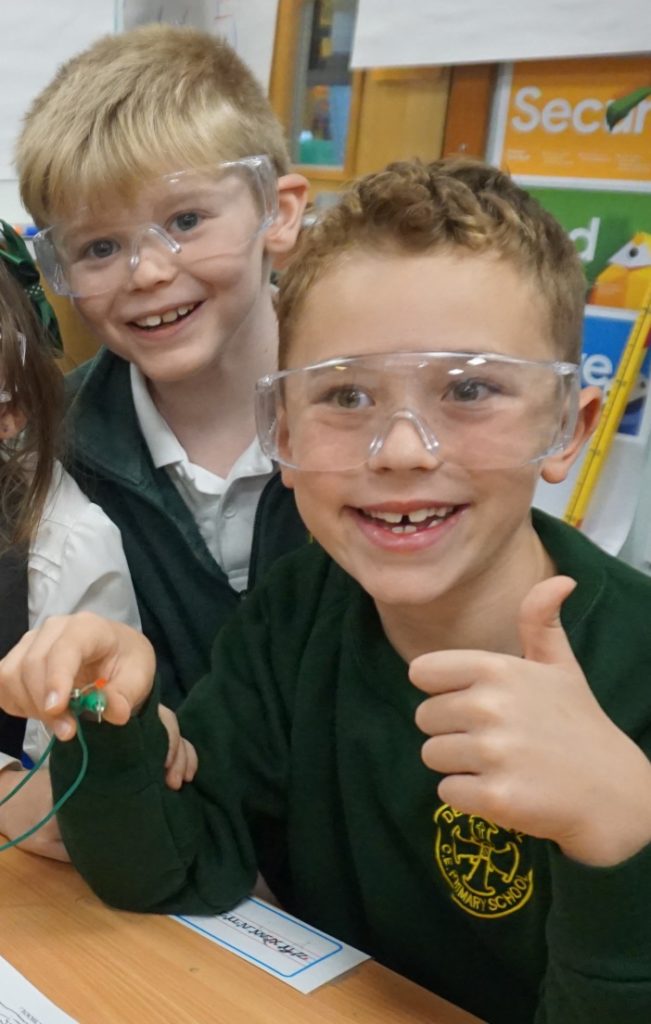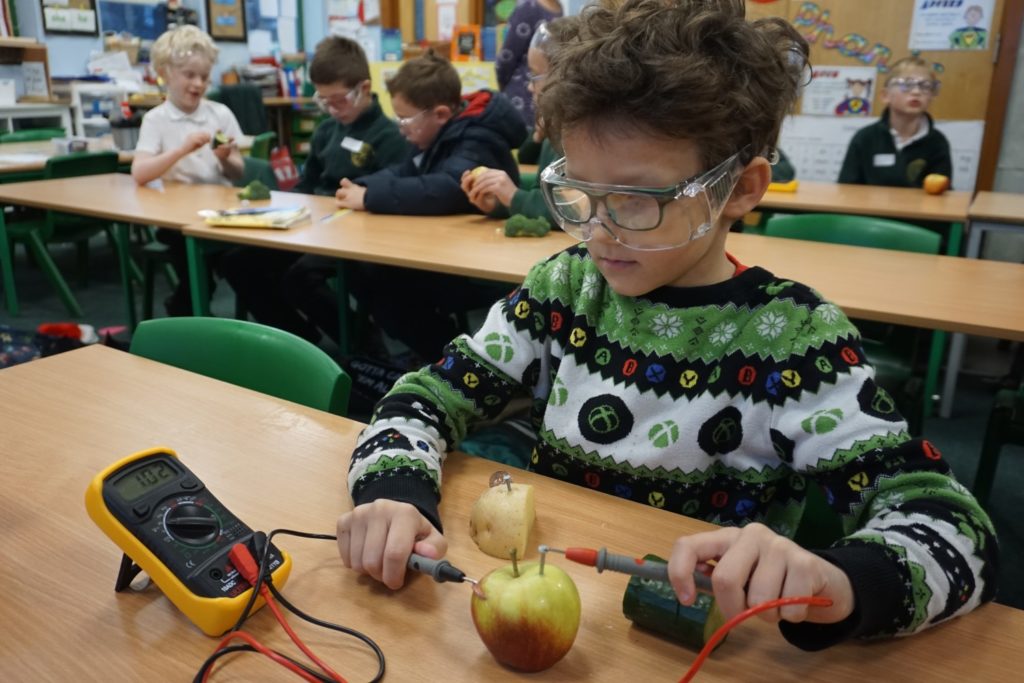Y3 / Y4 Science Club – Making Homemade Batteries from Lemons and Limes
At Science Club on Thursday 18th November, children worked in pairs, inserting a galvanized nail and a penny coin into either a lemon or lime, to make a battery. Each battery was tested with a voltmeter and found to produce about 0.95 volts. The children then teamed up and connected their homemade batteries with numerous alligator clip wires to successfully light up LEDs.
The children learnt that these batteries rely on the zinc from the nail dissolving in the acidic juice of the lemons and limes, and in so doing, leaving electrons behind in the nail. These electrons prefer to be with the copper in the coin and so travel through the connecting wires to the copper metal. It is the flow of these electrons which is the electricity.
(Note: All of the homemade batteries made in science club were low voltage and were safe, but the children were still reminded never to play with any electricity in the home.)
















